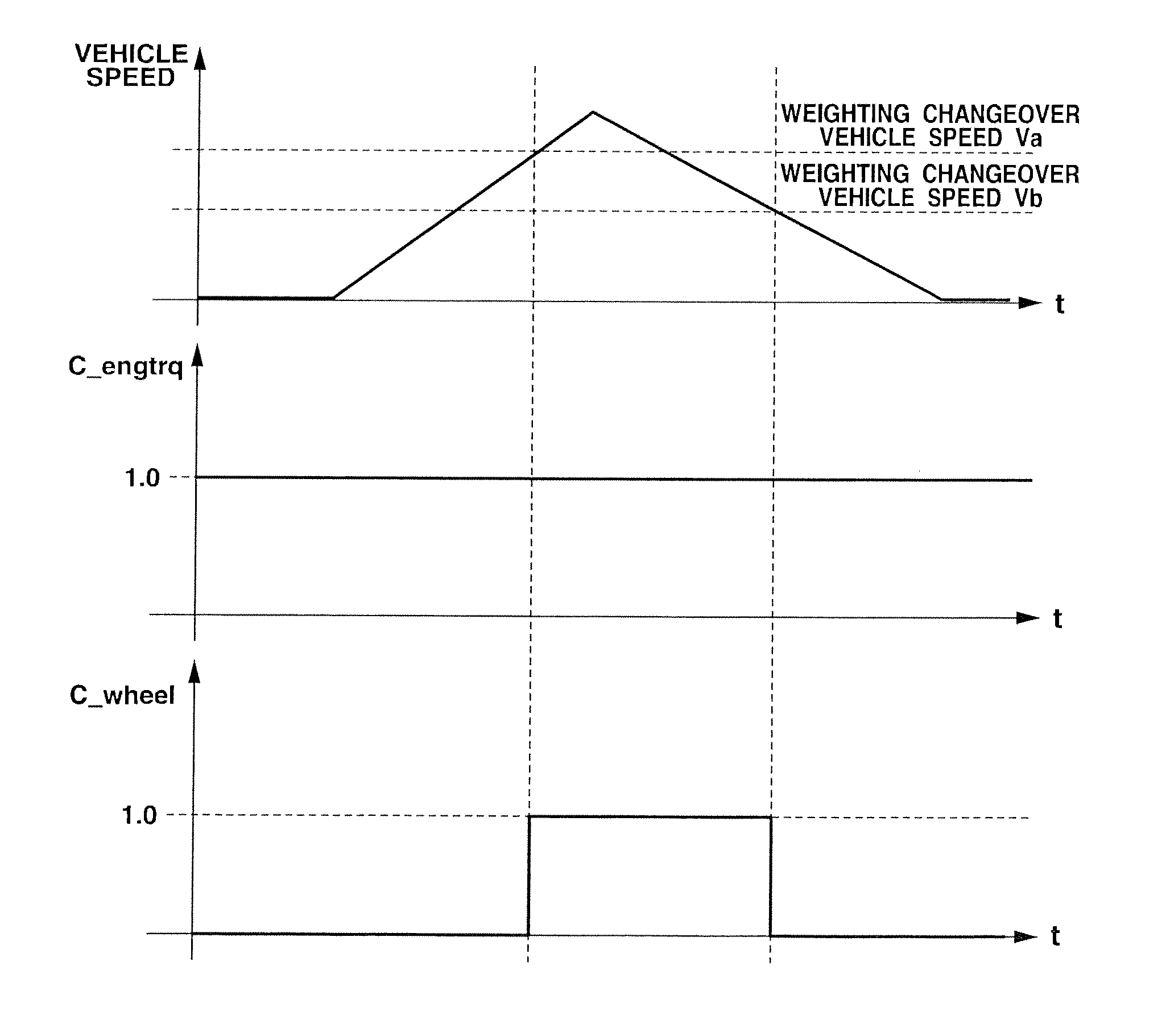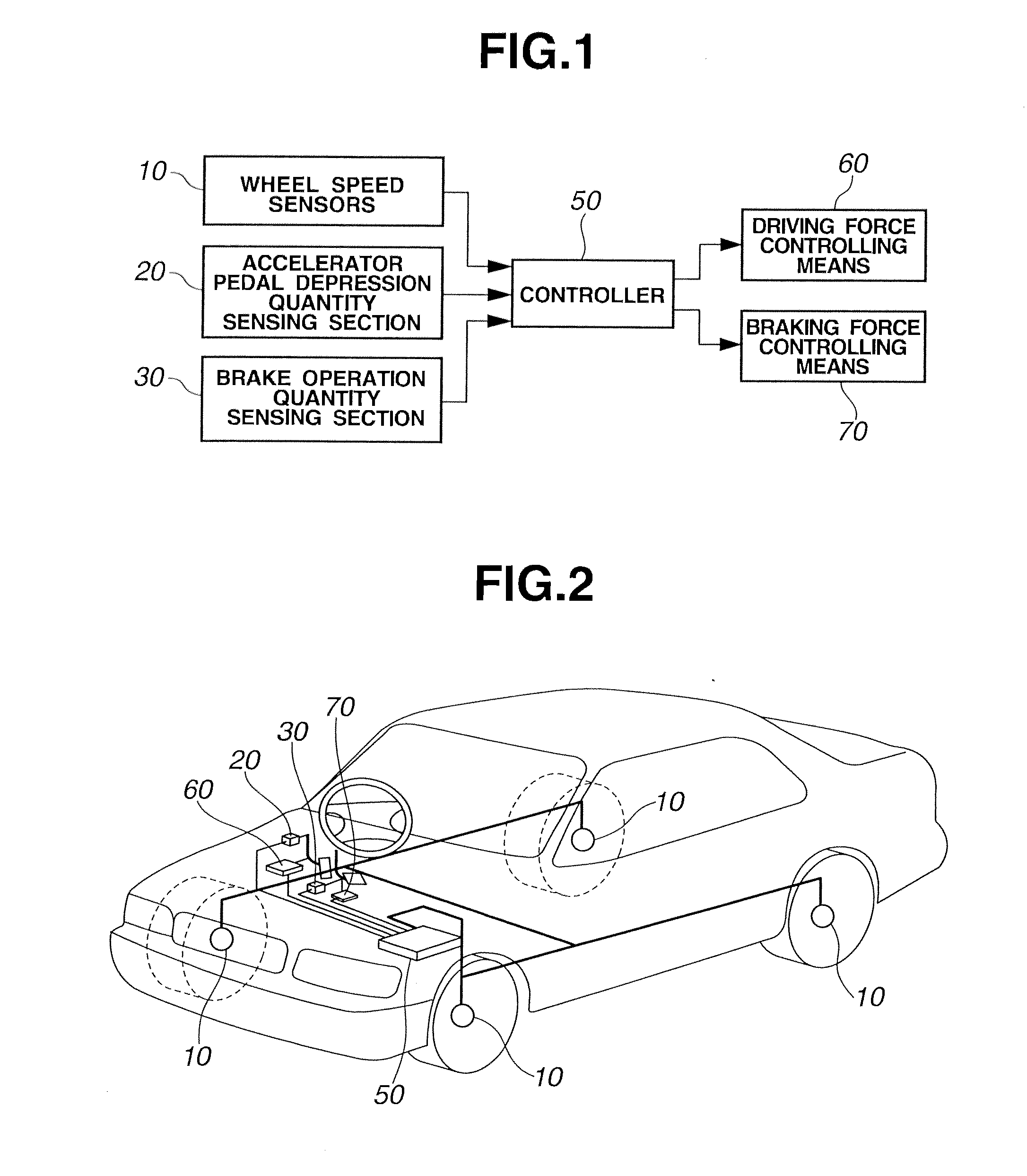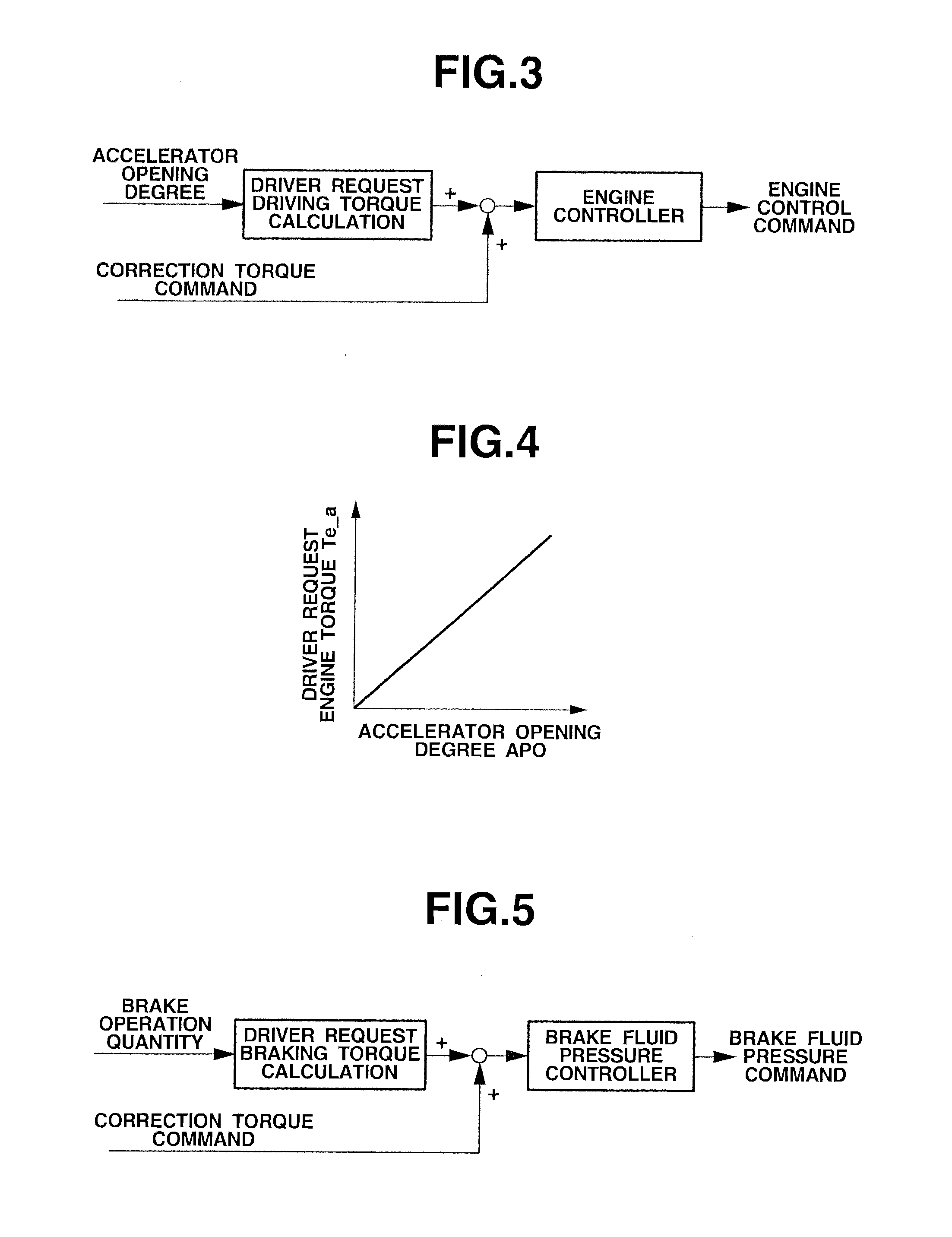Vibration-restraining control apparatus for vehicle
a control device and vehicle technology, applied in electric/magnetic computing, instruments, analogue processes for specific applications, etc., can solve the problem that the control system cannot correct the driving torque to suppress the sprung vibration of the vehicle properly, and achieve the effect of improving the driving for
- Summary
- Abstract
- Description
- Claims
- Application Information
AI Technical Summary
Benefits of technology
Problems solved by technology
Method used
Image
Examples
embodiment 1
[0027]FIG. 1 is a system view showing the structure of a vibration damping or suppressing apparatus according to an embodiment 1. FIG. 2 is a structure view showing a vehicle equipped with the vibration damping apparatus. First, explanation is directed to the structure of the vibration damping apparatus. Wheel speed sensors 10 sense the wheels speeds of respective wheels of the vehicle from the rpms of the respective wheels. An accelerator pedal depression quantity sensing section 20 senses an accelerator opening degree APO representing the depression quantity of an accelerator pedal by the driver. A brake operation quantity sensing section 30 senses a brake operation quantity S_b by the driver (such as a brake pedal stroke quantity or a depressing force on a brake pedal).
[0028]A controller 50 delivers control signals to a driving force controlling means or device 60 and a braking force controlling means or device 70 which are an actuator or actuators of the vibration suppressing ap...
embodiment 2
[0078]Following is explanation on a second embodiment. Since the basic construction is the same as the first embodiment, the following explanation is directed only to points different from the first embodiment. FIG. 13 is a flowchart showing a weighting coefficient setting process according to the second embodiment.
[0079]At a step S300-1, the controller acquires or obtain an operating state of an brake actuator control (such as VDC, TCS, ABS, EBD etc.). VDC is an abbreviation of vehicle dynamics control which is a control to stabilize a vehicle cornering behavior (yaw rate, etc.). TCS is an abbreviation of traction control system to restrain slip due to excessive torque applied to a driving wheel. ABS is an abbreviation of anti-lock brake system to avoid wheel lock at the time of hard braking. EBD is an abbreviation of electronic brake force distribution system to optimize the front and rear wheel brake force distribution to prevent rear wheel lock at the time of braking. Each of th...
PUM
 Login to View More
Login to View More Abstract
Description
Claims
Application Information
 Login to View More
Login to View More - R&D
- Intellectual Property
- Life Sciences
- Materials
- Tech Scout
- Unparalleled Data Quality
- Higher Quality Content
- 60% Fewer Hallucinations
Browse by: Latest US Patents, China's latest patents, Technical Efficacy Thesaurus, Application Domain, Technology Topic, Popular Technical Reports.
© 2025 PatSnap. All rights reserved.Legal|Privacy policy|Modern Slavery Act Transparency Statement|Sitemap|About US| Contact US: help@patsnap.com



